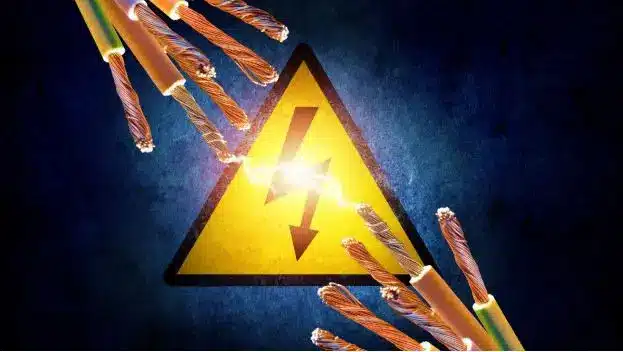Even without considering worries about energy security and climate catastrophe, powering an island is difficult. Ireland stays one of the most oil-dependent countries in Europe but has extensive wind resources, though the power generated from renewable sources, like solar panels, is rapidly rising. Here, we analyze where does Northern Ireland get its electricity from.
Where Does Northern Ireland Get Its Electricity From?
Petroleum fuels, natural gas, solar panels, renewables and solid fossil fuels constitute most of Ireland’s electricity supply. Thus according to Eurostat, petroleum products, like crude oil, will constitute almost half (45.9%) of Ireland’s energy balance in 2020. The nation’s oil industry ranks the highest in the European Union.
Natural gas ranks second, providing 32.8% of the nation’s electricity in 2020. Following this are solid fossil fuels like coal, which composed 8.6% of Ireland’s energy in 2020. With an estimated rise in solar energy output recently, solar panels are a terrific renewable energy source in Northern Ireland.
Green energy resources, like solar panels and wind, added 12.7%. Each year, Northern Ireland is exposed to 1,000–1,100 hours of UV light. Solar panels can make sufficient solar energy to supply your house with this number of UV hours.
What Is the Root of These Power Sources?

According to the Sustainable Energy Authority of Ireland, Ireland’s 2 key energy sources, natural gas and oil, are mainly supplied, while most renewable energy is produced domestically (SEAI). Ireland gets nearly all of its oil besides a tiny bit of domestic biofuel production. Given the official stance that no more offshore oil exploration licenses will be issued, this will likely stay the same.
Scotland’s pipeline system offers natural gas supplies besides its own production. In 2019, just over half (53%) of Ireland’s natural gas came from the UK, that also imports a massive portion of its gas. The domestic natural gas supply has maxed from the Corrib gas field and is presently falling. After the area is gone, Ireland will be reliant on more than 90% of imports by 2030.
The UK government has long valued urging the use of green energy sources like solar panels. All EU member nations were bound to attain a 32% renewable energy goal by 2030 under the EU’s Renewable Energy Directive. The goal is to move in this path by adding more incentives and programs in the renewable power sector, so the UK has been moving toward that aim.
How Safe Is the Energy Source in Northern Ireland?
One of the simplest and most common measures of a nation’s energy security is its reliance on energy imports, with domestic power sources usually considered safer than imported ones. Ireland is one of the EU’s most import-dependent nations, based on SEAI’s Energy Security in Ireland 2020 report, mainly due to its reliance on imported oil and gas.
The country’s reliance on imports fell to 67% in 2018 from 89% between 2001 and 2015, mainly because of the Corrib gas production facility and rising solar panel usage. Ireland’s potential energy security score would rise by 2030 if imported oil and gas were replaced by energy efficiency and locally made renewable energy.
Although, the SEAI has stated that the score will likely drop over the next ten years since oil and gas make up almost all of Ireland’s primary energy, and the country is set to grow more dependent on non-EU oil and gas as EU supplies drop.
Northern Ireland has very effective solar panels. Solar panels do not require direct sunlight to function, though sunny days boost their productivity. During the winter and on cloudy days, solar panels can still create a large quantity of electricity.
In countries with overly warm climates, solar panels can overheat. Indeed, cooler temps are best for solar panels. So, for most of the year, Northern Ireland’s weather is good for the device’s effectiveness.
Why Are Oil And Gas Used So Heavily?
Ireland’s transport sector relies almost solely on oil-based goods and uses most of the country’s oil supply. In 2019, it sucked up 42% of Ireland’s total energy consumption.
Based on SEAI’s Energy Security in Ireland 2020 study, this reliance implies that oil will likely remain the industry’s dominant fuel for the upcoming years.
Natural gas provides nearly a third of Ireland’s energy demands by heating and powering 700,000 households and companies and creating more than 50% of the electricity Ireland will need in 2020.
Are Solar Panels Better Than Gas And Oils?
Home solar energy, as opposed to fossil fuels like oil and natural gas, doesn’t emit toxic pollutants or greenhouse gases like carbon dioxide into the air and water source. Solar power has the potential to save more than 25,000 lives while saving money worth of health and environmental harm.
In light of the tremendous financial advantages and cost savings, installing a solar panel system is worthwhile. Solar panels are only ideal for some, though. Residents with low energy demands, cheap electricity, or bad conditions all year round may not benefit financially from a solar system.
Is Ireland Aiming to Break Its Ties To Oil And Gas?

It is predicted that biofuels and electrification will replace a growing portion of diesel and petrol in the transport industry within the next ten years. According to the SEAI, while oil has almost entirely been removed from Ireland’s electricity generation, clean energy, electrification, and biomass can also lower Ireland’s reliance on oil for energy.
While natural gas proceeds to be Ireland’s primary source of electricity, the amount of power generated by renewable energy sources like solar panels is gradually increasing. Although renewable energy added 29% of the total energy used to produce electricity in 2020, the amount of energy generated by renewable energies accounted for 42%.
Given the different rates of electricity production in multiple methods, there is a considerable variation in the amounts of electricity produced by fuel contrasted to the fuel inputs. Because of their high efficiency, renewables like wind and solar panels account for a much more significant chunk of power generation than fuel inputs.
By 2030, Ireland’s Climate Action Plan has established a target of 80% renewable electricity generation, with most of this electricity expected to result from wind and solar panels.
Conclusion
Where does Northern Ireland get its electricity from? Petroleum products, natural gas, green energy sources, and solid fossil fuels make up most of Ireland’s electricity supply.
Presently, solar and wind energy are becoming more widespread. Compared to gas or oil, they are much superior and more efficient. Solar panels are a smart buy because they have a little environmental effect and can reduce energy costs.


